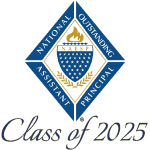
Sonia Matthew
Mary B. Neal Elementary School
Waldorf, Maryland
smatthew@ccboe.com
Best Practices
1) Assistant Principal Role as Instructional Leader: As an Assistant Principal, I can’t lose sight of the need for instructional leadership, especially as we face the ever-changing challenges in education. Our students are constantly evolving, and it’s crucial for us to stay up to date with best practices to support their growth. I’ve found that learning from others in the field, who have tried-and-true strategies, is invaluable. One resource I use on a consistent basis is Principal Kafele’s weekly professional learning sessions on YouTube. He brings in leaders from the field, interviews them, and shares his own experiences in a relatable and personable manner. His newest book, What Is My Value Instructionally to the Teachers I Supervise, intrigued me with its title, and it emphasizes the importance of being instructional leaders first. When I stepped into the administrative role, it was quite challenging. However, I embraced my role as a leader by always being engaged in learning. Recently during Adam Welcome’s keynote address at our Fall 2024 MAESP / MASSP Leadership Convening, he spoke about being a fearless learner. I love learning and believe that, as instructional leaders, we are the lead learners. As such, leading the learning means we must always learn; fearlessly. As Principal Kafele mentioned in a recent podcast, this work defines him, and he can’t separate it from who he is. His book, The Assistant Principal Identity: Protecting Your Leadership Mindset, Fervor, and Authenticity resonates with me deeply. I am defined by my role as a lead learner and a student of this work. A big part of being an instructional leader is taking what we learn and continually implementing it in our practice. A key way to do this is by being active in classrooms, with a clear intention of ensuring that learning is maximized through best evidence based instruction. Timely feedback is critical in this process. Together, with my principal and team, our conversations are focused and tiered according to what our teachers need. For example, consistent walkthrough data recently showed that many of our teachers have not yet progressed in thoroughly understanding standards-based learning objectives. As a leadership team, we designed professional development for these teachers on unpacking standards and providing templates and tools to facilitate growth in this area. As an Assistant Principal, it takes intention to ensure that we are not solely dealing with discipline and being underutilized in our role. Principal Kafele often says that we are the most underutilized in the profession due to being known as solely the “disciplinarian.” Instead, we must learn a lot and often through books, podcasts, and connecting with those who are in the role at various stages and contexts, so that we can serve as instructional leaders and balance the many facets of our role. The Maryland Association of Elementary School Principals (MAESP) has certainly allowed me to stay connected to learning and learn continuously, allowing my teachers to benefit, which in turn results in more and more students flourishing.
2) Whole Child Initiatives: The Move This World (MTW) Social Emotional Learning Program has had a significant impact in the schools where I serve as an assistant principal and brilliantly addresses the whole child. We first piloted the MTW program at the middle school level for 6th grade, right when students were returning from the COVID-19 pandemic. The need for a program like this was immense, given the challenges students faced during that time. Although we encountered some initial resistance, I was determined to make it a success. As the designated leader for the MTW initiative at my schools, I made it a priority to generate enthusiasm and ensure the program seamlessly integrated into our daily schedule. The MTW portal is fantastic, offering user friendly videos and a wealth of resources. To further support our teachers, I collaborated closely with my counselor to provide a weekly calendar and continually encouraged the program’s use. The results were outstanding! My dedication and success with MTW led to the honor of being offered the role of a Move This World Ambassador. This role allows me to connect with other MTW leaders nationwide during monthly calls facilitated by MTW staff. I’ve also had the privilege of being featured as a wellness webinar guest speaker, sharing my experiences and belief in the whole child approach that MTW provides. I firmly believe that addressing the whole child is essential; students need to be prepared to learn before they can effectively engage in academic activities. The MTW program excels in this regard. At the elementary level, we have continued to use the program consistently, and it has been highly successful. This comprehensive curriculum offers a unified approach to discussing and managing complicated emotions and concepts while providing strategies to improve students’ understanding and functioning at school. This year, our counselors are using the program for tier 2 and 3 interventions. Instead of reinventing the wheel, this program can be seamlessly integrated and enhanced as needed. It truly offers the best of both worlds. For novice teachers or those who may not be as proficient with social emotional learning, the program is simple to use. For others who are more comfortable with such practices, they can add to the lessons with the in-depth resources available through the platform or from their own toolboxes. As an educational leader, I believe that whole child approaches are critical because students come to school at different developmental stages, not just academically, but socially and emotionally. I am grateful that our students have consistent, quality practices every day to address their needs holistically through the Move This World program.


